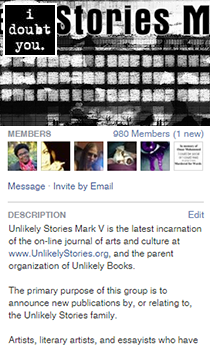Identity In Transition
Who we are has always been a topic in art, as perhaps the long history of the self portrait can attest. There are written forms of self-portraiture that range from the brusque job application to the multiple volumes of Proust. These forms are what stand in silhouette when the land upon which we stand, and the time in history shifts. Reading contemporary self-portraits gives the silhouette a wash of hue, because we, ourselves, exist at a tangential time.
Perhaps identities are claimed for a variety of motivations; who we see someone as may determine how we interact with them, and it might be that someone choses an identity because of social interactions—certainly there are aspects of ourselves that are as simple and social getting dressed: the human convention of covering ourselves.
The poet’s identity is perceived by the writing itself, and to read a poem is to sometimes see from those others eyes. When the writing is self-portraiture, we see what we might not otherwise, we see the internal perception of a person with a clarity that can be very intimate. This intimacy is certainly true in KB’s How To Identify Yourself With A Wound (Kallisto Gaia Press 2022). Chosen as the winner of the Saguaro Poetry Prize, the publication’s two and a half pages of acknowledgments indicate that this is not a covert work.
Opening with a poem about setting, and taking place in Fort Worth, childhood recollection includes “breathing on the side of my neck on the littest of school nights/from a boy who these days pushes daisies. Damn I love this city”, a physical perception both universal and intimate. The work continues with one of five poems bearing the book’s title and annotated by the year, ranging between 2007-2020. The first of these is again a childhood recollection “a 12-year-old rocking cornrows” (2) with the dual then-now perception of the work’s thesis:
“it’s best to identify yourself with a wound/ Preferably before they even happen. That way/ when they’re ready to puncture permanence in you/ you don’t flinch or run or howl too loud.” While this is not the sanitized perception we socially accepted as childhood, the clarity of imagery—of pen stains and lunchroom tables—has a recognizably prosaic nature.
The engagement here is in the memoir, and the second of the title poems, dated 2012, involves a school fight over “Is it the last time she called me// a dyke” (10). Prior to the occurrence of this poem in the text, are several poems that involve graphic elements, including enumerative indentations, list poems and strike-through. Two poems following the school fight is a pantoum (13) that repeats the tradition or repetition by use of phrases: “grieve unwanted attachments”, “becoming distant”,” I take”,“surgeon”, “mirror”, “problems”,” time” before returning to the original phrase “grieve unwanted attachments”. Unlike other poems here, this one focuses on a frozen moment, that of the night before a surgery. Again, the overarching experience is achingly ordinary, and the specific intimacy of the pending operation is not in the work’s conclusion, but in the title “Pre-Top Surgery Pantoum.”
The two-remaining title -poem -plus- date works are set in time at a two-year interval, with ‘[..] (2018)” beginning “I am a woman only under certain conditions” (24) that is set in a nightclub and enumerates physical instances such as “when the bouncer touches/my lower back”. But this physicality shifts in “[...] (2020” with the opening of “The virus came & everything was already lonely” (27). The meditation here is about not only the intimate self, but the absences faced because of Covid: “it’s hard living touch -to- touch.” Once again, the poem grounds itself in a certain universality, except the intimate moment is very specific: “soon, my chest will finish/ growing skin that only you and surgeons have touched.” From a cultural perspective, there are a variety of surgeries upon mammary tissue, and not all of them are motivated by sudden physical trauma, so even this intimate moment is not outside the bounds of ordinary understanding.
Perhaps that is the mission of the dramatic monologue, to see from the perspective of the narrator. Over the course of this work, these poems present the interior perception of a body changing outward appearance, yet since the reader is privy to this life as it was lived, we experience the transition painlessly, with literary skill and with elegance.

Su Zi is a 2023 Zoeglossia Fellow. She has been writing life-long, with publications in poetry, fiction, essay and interview/essay form, both in literary periodicals and special interest publications for equestrian life. She's a maker of art in a variety of forms, including painting, printmaking, artistbooks, and pottery, and publisher of an artist-made, eco-feminist, chapbook series called Red Mare. Her latest book is from Hysterical Books.


